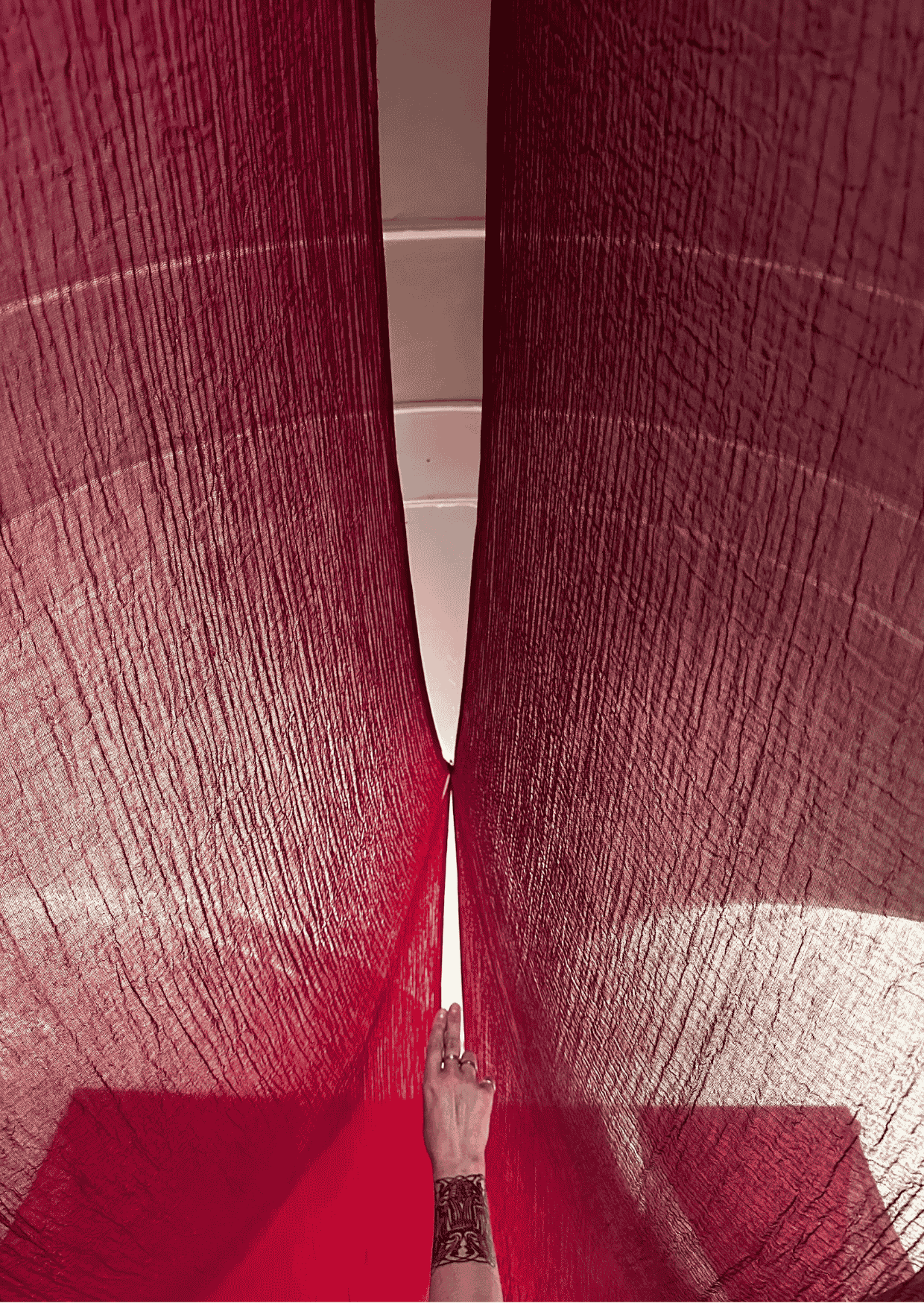
Fuga Ascendente:
Site-specific multimedia Installation in two parts dedicated to the resistance and resilience in culture.
Curated by Anna Shpilko
Visual Artist Ondy (Andrea Bordács)
Sound: Lisokot (Varya Pavlova), Iuz? T (Daniele Fedeli), Shari DeLorian
Two immersive installations exist within the walls of the magnificent yet faded Italian villa Marigola, built as a mix of Gothic and Renaissance style. It faces stunning Poets’ Golf, named after the poets, writers and artists, for whom it historically served as a silent retreat. Among them are Dante Alligieri and Francesco Petrarca, Lord Byron and Mary Shelley, Pier Paolo Pasolini.
Two chapters explore artistic expression as a form of presence under pressure, celebrating the human capacity to resist, create, and love in the face of fear.
Andrea Bordacs’ scenographic installation, inspired by the film on Armenian culture surviving over genocide ‘The Color of Pomegranates’ by Sergei Parajanov, presents one-of-a-kind female armours.
In parallel, on the first floor, a sound work addresses the inner world of composer Dmitri Shostakovich
through archival voices, revealing his force of creation under constraint.
The voices are interpreted by artists Lisokot and Iuz? T.
The music form “Fuga” absorbed the latin meaning of an act of disappearance, deviation, and silent resistance. “Ascendente” evokes a continuous, upward motion without release. Together, the title speaks of non-linear, cumulative tensions that generate movement under pressure, a form that emerges from constraint. The title also recalls a book Moderato Cantabile by M. Duras, in which a musical term is a metaphor for fractured, unsaid internal intonation.
Part 1
The installation turns a faded withdrawing room into an intimate sonic space dedicated to the inner life of Dmitri Shostakovich, one of the most complex and compelling composers of the twentieth century, a radical case of artistic persistence under scrutiny. The work unfolds across three asynchronous voices: those of the composer, his loved ones, and those who bore witness. Assembled from letters and recollections, the
piece becomes a fragmented acoustic diary.
More than the biography of Shostakovich, this work is about the condition of quiet insistence on form as a way to survive, even though silence might seem safer.
Part 2
On the ground floor Andrea Bordacs fills the hall with the scenographic installation, using hand-died textiles of red shades to present her series of one-of-a-kind female armors that she crafted during her residence in Venice.
The installation is inspired by the film ‘The Color of Pomegranates’ by Armenian film director Sergei Parajanov. Shot in 1969, this surreal biopic unfolds as a sequence of tableaux vivants that poetically narrate the life of 18th-century Armenian poet Sayat-Nova. Charged with rich visual symbolism, the film celebrates the endurance of culture in the face of persecution.
Ondy is an artist, costume designer, and scenographer with rare sensitivity to textile and form, whose path was shaped through cinema, and hands-on material knowledge comes from years of training with artisans in Hungary. Today, inspired by the craft heritage and nature of Tuscany, she creates one-of-a-kind works at the intersection of sculpture and dress.